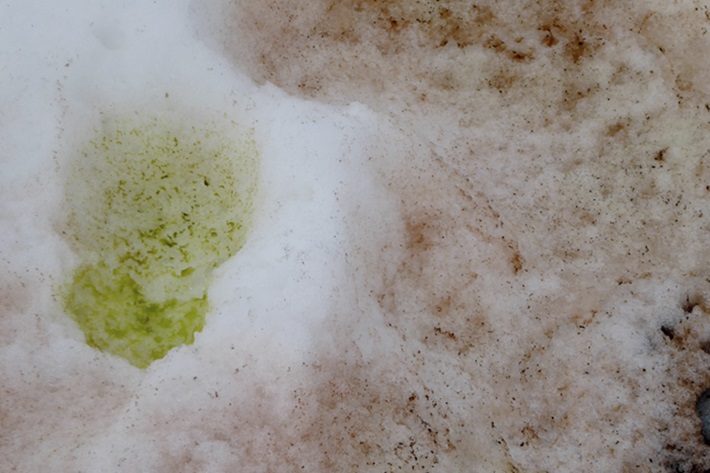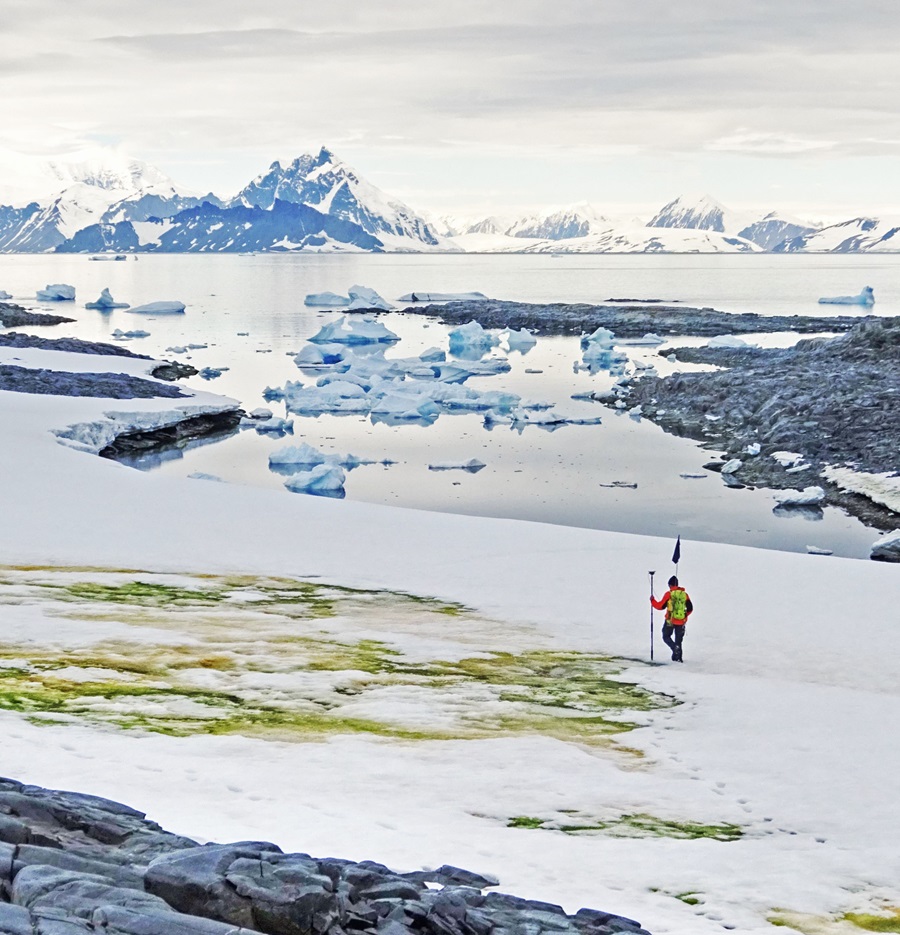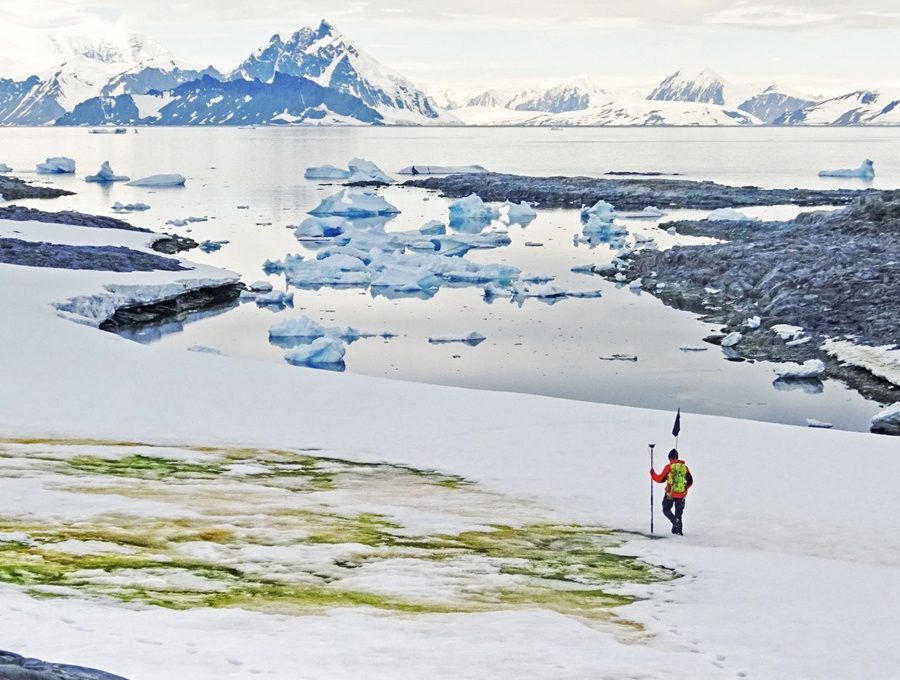October 31, 2024

Red and green algae color the snow on Half Moon Island off Antarctica. Credit: Paul Seligman, FlickrCC.
Dear EarthTalk: Is the so-called “greening” of Antarctica as its ice melts actually helping to prevent climate change given that plant life absorbs and stores carbon?
– W.P. Smith, via email
As Antarctica warms due to climate change, an unexpected phenomenon is occurring: the “greening” of the continent. As ice melts, certain areas once covered in snow and ice are becoming hospitable to algae and other plant life. A key question arises: Does the increased carbon capture from this greening offset or help prevent climate change?
The “greening” of Antarctica primarily refers to the growth of green snow algae, which thrive in the increasingly warmer temperatures of the Antarctic Peninsula. As temperatures rise slightly above freezing, especially in coastal regions, these algae blooms are expanding significantly. These blooms are acting as carbon “sinks,” absorbing carbon dioxide (CO2) through photosynthesis, which reduces greenhouse gases. According to a study by the University of Cambridge, green snow algae in Antarctica capture approximately 479 tonnes of CO2 annually, and their growth is expected to increase as the snow melts and more land becomes suitable for these blooms.
While the role of algae as a carbon sink is positive, there are several limitations to its impact on mitigating climate change. First, the scale of the carbon sequestration is relatively small when compared to global CO2 emissions. The estimated 479 tons of CO2 captured by Antarctic algae is just a fraction of the billions of tons emitted annually worldwide, rendering its contribution minimal in the grand scheme. As a result, while algae may contribute to reducing atmospheric CO2, it does not provide a large enough offset to make a significant dent in global warming.
Moreover, the overall ecological and climate impacts of Antarctica’s greening are most concerning. The melting of Antarctic ice is leading to rising sea levels, which far outweigh the benefits of carbon sequestration by its algae. And this global sea level rise threatens coastal communities and ecosystems around the world. Additionally, the introduction of plant life into Antarctica’s fragile ecosystem may create new environmental challenges, disrupting existing species and possibly causing further ecological shifts that could have unforeseen consequences.
While Antarctic algae blooms represent an interesting phenomenon, to combat climate change effectively we need to focus on reducing our carbon footprint through renewable energy, supporting reforestation projects, advocating for strong climate policies, and reducing waste.

CONTACTS
Antarctic ‘greening’ at dramatic rate
Climate change will turn coastal Antarctica green, say scientists
EarthTalk® is produced by Roddy Scheer & Doug Moss for the 501(c)3 nonprofit EarthTalk. See more at https://emagazine.com. To donate, visit https://earthtalk.org. Send questions to: question@earthtalk.org.

